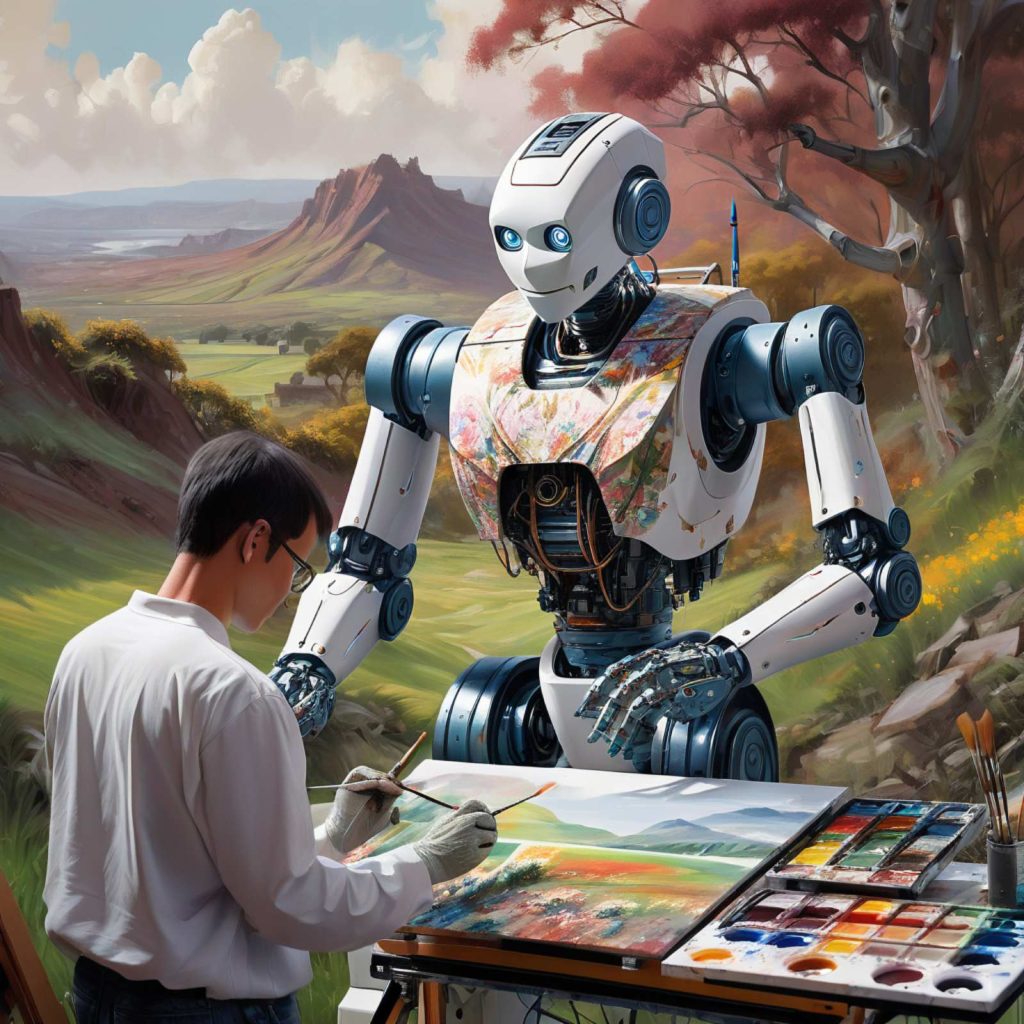Introduction:
In the age of artificial intelligence (AI), where machines mimic human cognition with unprecedented accuracy, a profound question echoes through the corridors of innovation: Can machines be learned to truly think? This inquiry delves Only AI Content into the heart of AI’s capabilities and limitations. It is sparking debates among technologists, philosophers, and creatives alike. In this article we will go through the realms of algorithms and imagination. Let’s navigate the enigmatic landscape of AI and creativity to unravel the mysteries behind machine intelligence!
Unraveling the Enigma: Understanding AI and Creativity
AI and Creativity: Definition
AI creativity refers to the ability of artificial intelligence systems to generate innovative ideas autonomously or with humans guidance. It involves the application of AI techniques such as deep learning, generative adversarial networks (GANs), and reinforcement learning. These techniques are used to produce creative outputs across various domains, such as art, music, literature, design, and problem-solving. AI creativity can range from generating realistic images or music compositions to inventing new concepts or designs. In conclusion, humans may find these creations inspiring or valuable. While AI can demonstrate creativity, the evaluation of its creative output often involves a blend of objective measures and human judgment.
The Genesis: From Logic to AI Creativity
At its inception, AI primarily revolved around logical problem-solving and rule-based systems, mirroring human cognition in structured domains. However, as technology advanced, the quest to imbue machines with creativity ignited a new frontier. Can machines truly innovate beyond predefined parameters? The quest for AI and creativity intertwines with the essence of human expression, challenging the very notion of what it means to think.
AI and Creativity: Breaking Boundaries
Artistic Endeavors: Can Machines Paint with Passion?
In recent years, AI algorithms have ventured also into the realm of artistry, producing mesmerizing paintings, music compositions, and even literary works. From neural networks generating captivating landscapes to algorithms composing symphonies reminiscent of classical maestros, machines exhibit a semblance of creative prowess. But can these creations transcend mere imitation to evoke genuine emotion and inspiration?
Literary Pursuits: Crafting Tales of Tomorrow
AI-powered language models, such as ChatGPT, have redefined storytelling by generating narratives indistinguishable from human-written prose. Yet, amidst the eloquent passages and intricate plotlines, lingers a fundamental question: Can machines comprehend the essence of storytelling beyond syntax and semantics? Can they evoke empathy, suspense, and imagination similar to human authors?
The Conundrum of Consciousness: Exploring the Depths of AI
Consciousness vs. Computation: The Diverging Paths
In the quest to unravel the mysteries of AI and creativity, the notion of consciousness emerges as a pivotal point of divergence. While machines excel at processing vast amounts of data and executing complex algorithms, the enigmatic realm of consciousness remains elusive. Can consciousness, with its intricacies of self-awareness and subjective experience, ever be replicated within the circuits of silicon?
The Turing Test Revisited: A Litmus Test for Creativity?
Alan Turing’s seminal test, designed to assess a machine’s ability to exhibit intelligent behavior indistinguishable from humans, takes on new significance in the context of creativity. Can a machine’s creative output stand the test of authenticity, compelling observers to question its origins? As AI algorithms blur the lines between human and machine-generated content, the Turing test evolves into a crucible for creativity itself.
Navigating Ethical Quandaries: Implications of AI in Creativity
Intellectual Property and Ownership: Who Owns AI-generated Art?
As AI-generated creations proliferate, a thorny issue arises: who holds ownership rights over these works of art? Unlike traditional human creators, algorithms lack legal personhood, complicating the attribution of authorship and royalties. Can existing intellectual property frameworks adapt to accommodate the nuances of AI-generated content, or do we need novel approaches to address this ethical conundrum?
Preserving Human Creativity: Striking a Balance
While AI expands the horizons of creative expression, concerns loom over its impact on human creativity. Will reliance on AI algorithms stifle individual innovation, relegating humans to passive consumers rather than active creators? Striking a delicate balance between harnessing AI’s potential and preserving human ingenuity becomes imperative in navigating the evolving landscape of creativity.
FAQs: Debunking Myths and Clarifying Concepts
1. Can AI truly be creative, or is it merely mimicking human behavior?
- AI’s creativity hinges on its ability to generate novel solutions or artifacts that evoke human-like responses. While AI may lack intrinsic emotions or consciousness, its outputs can exhibit creativity within predefined parameters.
2. How do AI algorithms learn to be creative?
- AI algorithms learn creativity through iterative processes, often involving large datasets and reinforcement learning techniques. By discerning patterns and generating diverse outputs, AI systems refine their creative capabilities over time.
3. Will AI eventually surpass human creativity?
- The trajectory of AI’s evolution remains uncertain, but it’s essential to recognize that human creativity encompasses nuances of emotion, empathy, and subjective experience. While AI may excel in certain domains, the essence of human creativity defies quantification and replication.

Conclusion: Embracing the Intersection of AI and Creativity
As we traverse the dynamic landscape of AI and creativity, one thing remains undoubtedly clear: the human capacity for innovation and imagination is unparalleled. While machines may dazzle us with their algorithmic prowess and creative outputs, they ultimately serve as catalysts for human ingenuity rather than replacements for it. By embracing the symbiotic relationship between AI and creativity, we unlock boundless possibilities for collaborative innovation, pushing the boundaries of human achievement to unprecedented heights! So, can machines be learned to truly think? Perhaps not in the same way humans do, but they undoubtedly challenge our perceptions and propel us toward new frontiers of imagination and discovery!


